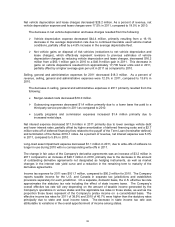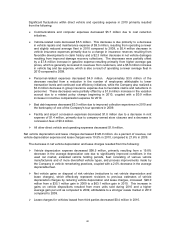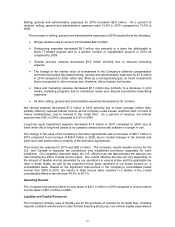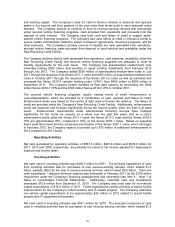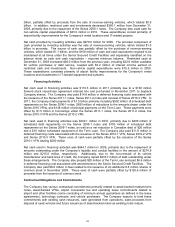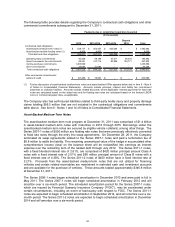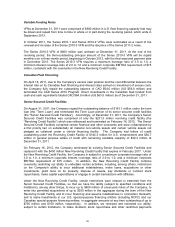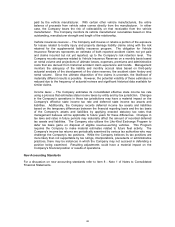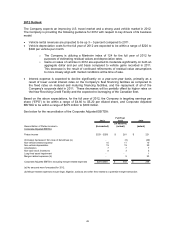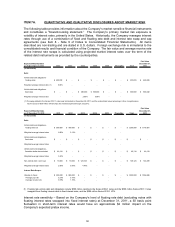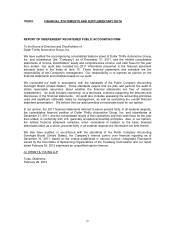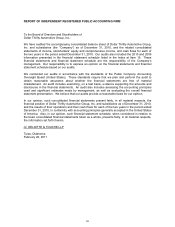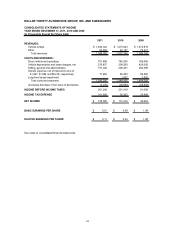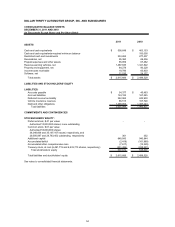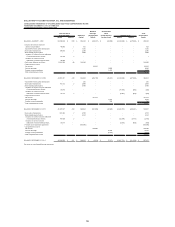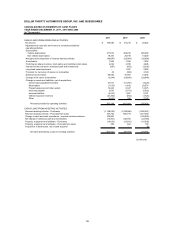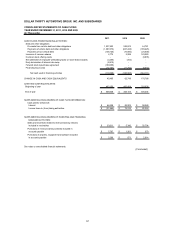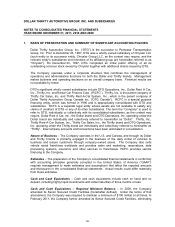Thrifty Car Rental 2011 Annual Report Download - page 50
Download and view the complete annual report
Please find page 50 of the 2011 Thrifty Car Rental annual report below. You can navigate through the pages in the report by either clicking on the pages listed below, or by using the keyword search tool below to find specific information within the annual report.paid by the vehicle manufacturer. With certain other vehicle manufacturers, the entire
balance of proceeds from vehicle sales comes directly from the manufacturer. In either
case, the Company bears the risk of collectability on that receivable from the vehicle
manufacturer. The Company monitors its vehicle manufacturer receivables based on time
outstanding, manufacturer strength and length of the relationship.
Vehicle insurance reserves – The Company self-insures or retains a portion of the exposure
for losses related to bodily injury and property damage liability claims along with the risk
retained for the supplemental liability insurance program. The obligation for Vehicle
Insurance Reserves represents an estimate of both reported accident claims not yet paid
and claims incurred but not yet reported, up to the Company’s risk retention level. The
Company records expense related to Vehicle Insurance Reserves on a monthly basis based
on rental volume and projections of ultimate losses, expenses, premiums and administrative
costs that are derived from historical accident claim experience and trends. Management
monitors the adequacy of the liability and monthly accrual rates based on third-party
actuarial analysis of the development of the claim reserves, the accident claim history and
rental volume. Since the ultimate disposition of the claims is uncertain, the likelihood of
materially different results is possible. However, the potential volatility of these estimates is
reduced due to the frequency of actuarial reviews and significant historical data available for
similar claims.
Income taxes – The Company estimates its consolidated effective state income tax rate
using a process that estimates state income taxes by entity and by tax jurisdiction. Changes
in the Company’s operations in these tax jurisdictions may have a material impact on the
Company’s effective state income tax rate and deferred state income tax assets and
liabilities. Additionally, the Company records deferred income tax assets and liabilities
based on the temporary differences between the financial reporting basis and the tax basis
of the Company’s assets and liabilities by applying enacted statutory tax rates that
management believes will be applicable to future years for these differences. Changes in
tax laws and rates in future periods may materially affect the amount of recorded deferred
tax assets and liabilities. The Company also utilizes the Like-Kind Exchange Program to
defer tax basis gains on disposal of eligible revenue-earning vehicles. This Program
requires the Company to make material estimates related to future fleet activity. The
Company’s income tax returns are periodically examined by various tax authorities who may
challenge the Company’s tax positions. While the Company believes its tax positions are
more likely than not supportable by tax rulings, interpretations, precedents or administrative
practices, there may be instances in which the Company may not succeed in defending a
position being examined. Resulting adjustments could have a material impact on the
Company’s financial position or results of operations.
New Accounting Standards
For a discussion on new accounting standards refer to Item 8 - Note 1 of Notes to Consolidated
Financial Statements.
48


